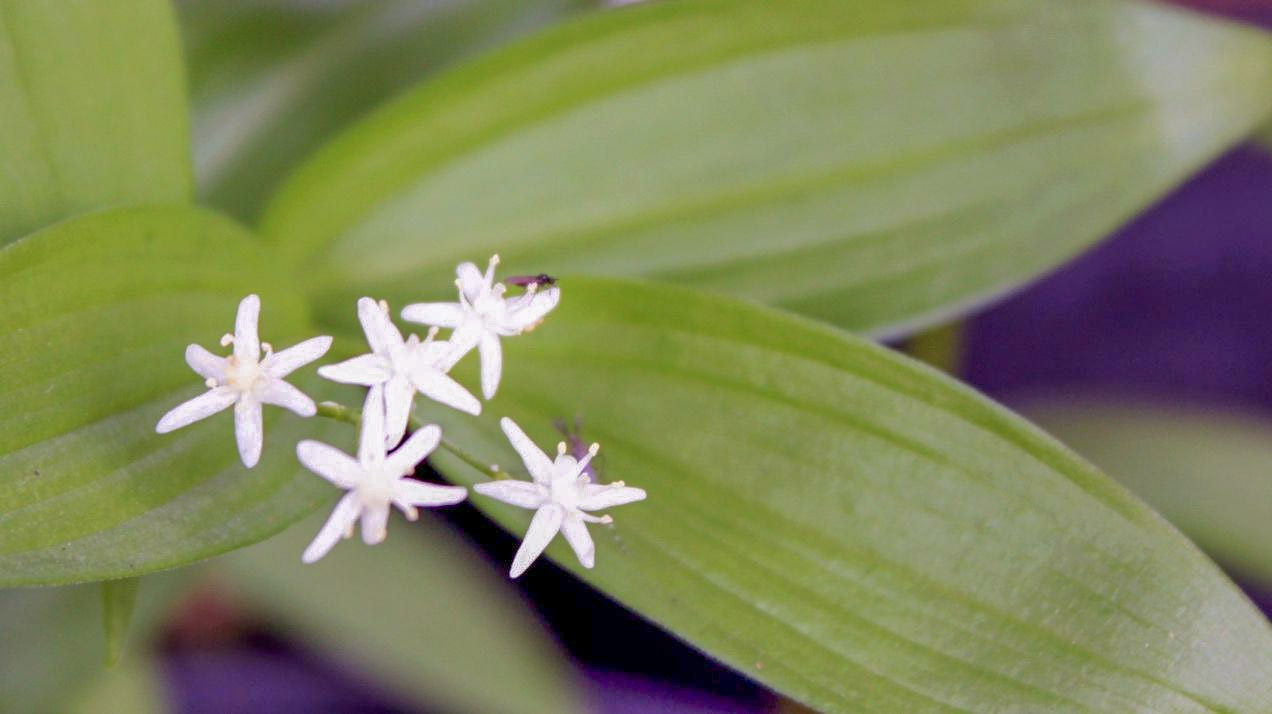What’s Blooming in the Nursery? is a monthly feature written by Audrey Fusco, SPAWN’s native plant nursery manager.

Slim Solomon’s seal (Maianthemum stellatum) is a woodland plant which is widely dispersed throughout Marin County, California.
Slim Solomon’s seal (Maianthemum stellatum) is a woodland plant which is widely dispersed throughout Marin County. The epithet stellatum refers to the plant’s star-shaped flowers which dangle from the tip of the stalk. The plant goes by many names including starry Solomon’s seal, starry false Solomon’s seal, star flower, and star-flowered Lily-of-the-Valley. This perennial plant reemerges each spring from fleshy underground rhizomes, with alternate leaves arranged along a smooth stem which zig-zags between the leaves. Slim Solomon’s seal is often confused with a close relative which is named false Solomon’s seal (Maianthemum racemosum). False Solomon’s seal has larger leaves than slim Solomon’s seal and has compact, feathery, white to pale-yellow flowers which grow in wide clusters at the tip of the stalk. Both plants are found distributed throughout most of North America.
These two plants are referred to as ‘false’ versions of Solomon’s seal because they resemble other plants named Solomon’s seal (Polygonatum sp.) which are found in the eastern and central parts of the United States. Both the ‘true’ and false Solomon’s seal species are part of the Asparagaceae family, which also contains the garden form of Asparagus. The stalks and leaves of the true and false Solomon’s seal species are similar in appearance. The difference is in the flowers; true Solomon’s seal plants have flowers which dangle from the stem on the underneath side of the leaves, while the flowers of false Solomon’s seal species form in a terminal cluster at the tip of the stem. Also, the name of the true Solomon’s seal originates from the appearance of scars on the rhizome which are said to resemble the Hebrew seal of King Solomon.




